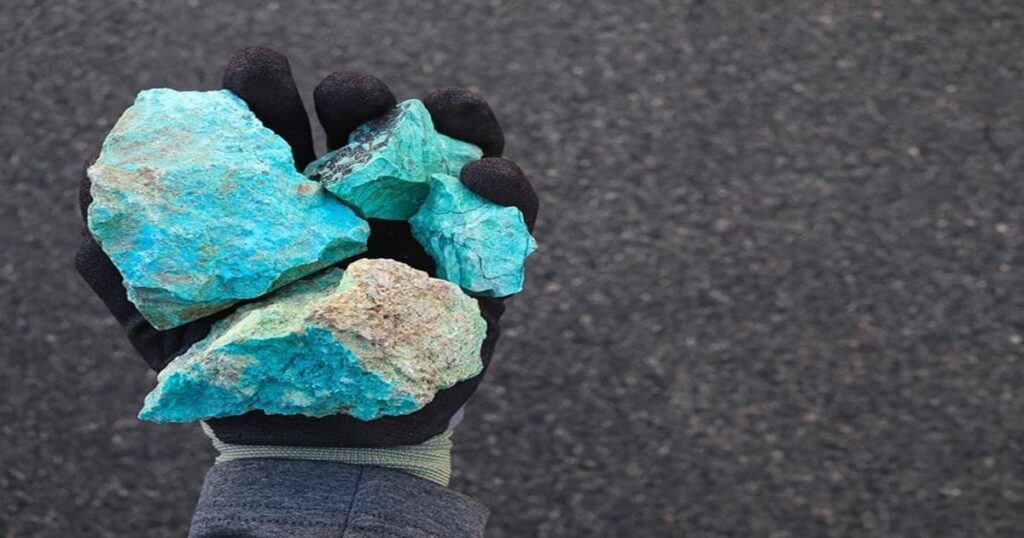Latin America’s Role in Powering India’s Clean Energy Goals

.jpg)
Image Source: Getty
The global transition to clean energy is creating new dependencies on minerals that serve as the backbone of renewable power and electric mobility. Lithium and copper, in particular, have emerged as indispensable resources for sustaining low-carbon growth. Yet, despite the growing body of research on mineral wealth spread across the world, much of the focus remains on China’s vast investments or the sustainability-oriented frameworks of Western nations. Latin America, an emerging geography in the global reorientation and focus on critical minerals, remains relatively less well-known. As India reorients in its quest for critical minerals and other supply chains connected to its import and export, engagements with Latin America are likely to become a key conduit.
India’s aspiration to reach a US$5 trillion economy and cut its reliance on fossil fuels hinges on securing resources. Without access to the critical minerals, India’s energy transition and its broader development agenda would struggle to advance rapidly. Perhaps the most important security guarantee in this regard would be a steady flow of minerals that are not available in required quantities at home. Amid the global flux caused by policy upheavals in the United States (US), establishing new supply chain connectivity with Latin America—not just in critical minerals but other export and import items—could power India’s own ambitions in this sector and provide much-desired predictability.
At the heart of this concept is the famous Lithium Triangle, which spans Argentina, Bolivia, and Chile, containing over 60 percent of the world’s lithium reserves located beneath its salt flats and deserts. In the mountains of Chile and Peru, large copper deposits form another hub for a potential global energy transformation. These resources, hidden in distant landscapes, could become lifelines for India’s economic and environmental goals. The trajectory of India’s engagement with Latin America in critical minerals could shape its economy.
Geoeconomics of Minerals
Critical minerals such as Lithium, Cobalt, and Copper represent more than mere commodities and are central to the new era geoeconomics driven by their linkages to clean energy, sustainability, and cutting-edge revolution in technologies. For instance, lithium-powered batteries are transforming not just electric vehicles but also how countries are recalibrating against their Sustainable Development Goals (SDGs). Other critical minerals, such as Cobalt and Copper, are important for their essential roles in modern technologies and for defence and renewable sectors, as well as serve as the industrial backbone of modern power systems from solar grids to wind turbines.
India’s current approach looks modest in comparison. Government-to-government agreements provide an entry point, but the involvement of private companies and the integration of the supply chain remain limited. Effectively securing its place in Latin America requires India to pursue innovative, environmentally conscious mining practices and cultivate partnerships that prioritise both growth and ethical standards.
India’s shift to Latin America has accelerated steadily over the past few years. In the area of critical minerals, Latin America’s own integration with the global supply and value chains has met a scramble in India to secure sufficiency in this sector. A new ground was broken in January 2024 when Khanij Bidesh India Ltd (KABIL) signed an agreement with Argentina’s state-owned company CAMYEN SE. This marked India’s first direct mining partnership in Latin America, giving India rights to explore and develop over 15,000 hectares of lithium-rich brine blocks. In February 2025, both sides signed another Memorandum of Understanding (MoU) for deeper collaboration in exploration and resource development of critical minerals, building upon the previous year’s mining agreement. In parallel, negotiations with Chile opened doors for cooperation across copper and lithium, while private Indian enterprises began exploring opportunities in Peru and Bolivia. What once seemed like a limited trade now appears as the early stages of a broader strategic partnership between India and Latin America.
Competing in the Global Arena
The global scene for critical minerals is crowding rapidly, leading to potential competition in the near future. Latin America is positioned as the next continent where the critical minerals kerfuffle, especially for Lithium, could lead to great power competition. China’s presence in Latin America is far greater than India’s. China is investing in Argentina’s lithium and nuclear power projects. Since 2018, Chinese companies have invested over US$16 billion in mining and processing operations, reinforced by infrastructure projects under the Belt and Road Initiative. A portion of these investments has been directed at securing a vertically integrated system that stretches from mining to refining and to battery production. China also controls a significant portion of Peru’s mining sector. Chile is another country in the region with large Lithium deposits, where China has risen to be the biggest buyer.
India’s current approach looks modest in comparison. Government-to-government agreements provide an entry point, but the involvement of private companies and the integration of the supply chain remain limited. Effectively securing its place in Latin America requires India to pursue innovative, environmentally conscious mining practices and cultivate partnerships that prioritise both growth and ethical standards.
India’s engagement with Latin America’s mineral wealth presents both opportunities and challenges. To establish itself as a trusted and innovative partner, India must follow an approach that extends beyond conventional extractive investment strategies. It should position itself not only as a buyer of critical minerals but also as a knowledge partner, capable of engaging in a give-and-take approach regarding the technologies and expertise associated with mining these vital resources. As environmental pressures are significant, lithium extraction in Chile’s Atacama Desert and copper mining in Peru consume large amounts of water and harm fragile ecosystems. India can learn from and contribute to new extraction technologies as a strong votary of renewable-energy-powered extraction technologies, such as solar-driven evaporation ponds for lithium and wind-assisted ore processing for copper. These low-impact methods, coupled with rehabilitation programmes for mined areas, could allow India to demonstrate environmental stewardship while ensuring long-term resource sustainability. Furthermore, India can pioneer the integration of circular economy principles into its mineral strategy. Instead of relying solely on extraction, India could implement systems to recycle batteries and copper, transforming waste streams into valuable resources.
India’s growing relationship with Latin America, particularly in technology cooperation for minerals extraction, could strengthen its ties. However, the broader global context warrants caution. Mineral prices swing with global demand, and geopolitical tensions can disrupt supply chains at a moment’s notice. To safeguard its energy ambitions, India must diversify its sourcing across multiple countries, maintain strategic reserves of lithium and copper, and leverage technology to monitor operations in real-time. What truly sets India apart is the possible integration of digital governance and predictive analytics into mining partnerships, a largely unexplored frontier. Blockchain and Internet of Things (IoT) systems can provide transparency across every stage, ensuring ethical practices and traceable, accountable supply chains.
As the global reliance on semiconductors increases, ensuring stability in the critical minerals sector requires a delicate balancing between creating domestic centres under its National Critical Mineral Mission (NCMM) and external reliance on predictable geographies. Latin America could be one such geography.
India also has the chance to go beyond mere extraction. Establishing battery manufacturing units or mineral processing facilities within host countries would enable India to capture more value downstream, generate employment, and strengthen its diplomatic relations. Coupled with innovative financing models, such as green mineral bonds or blended public-private investment schemes, can attract long-term capital while signalling India’s commitment to sustainable and responsible development. Through this, India can also address the skills and capacity gaps in Latin America. Training programmes, joint research projects, and scholarships can build a pipeline of skilled professionals, boosting operational efficiency and embedding knowledge locally.
Yet, even with strong community ties, the path is not without uncertainty. The political and regulatory landscapes in Latin America can shift rapidly, with changing mining laws, royalty structures, or even moves toward nationalisation. India can navigate these complexities through carefully structured multi-year agreements that provide legal stability while aligning incentives between governments, local companies, and Indian partners. By building these layered relationships, India can create a network resilient enough to withstand policy fluctuations and economic shocks.
As the global reliance on semiconductors increases, ensuring stability in the critical minerals sector requires a delicate balancing between creating domestic centres under its National Critical Mineral Mission (NCMM) and external reliance on predictable geographies. Latin America could be one such geography.
Vivek Mishra is Deputy Director – Strategic Studies Programme at the Observer Research Foundation
Prakreeti Chaudhary is a Research Intern at the Observer Research Foundation
The views expressed above belong to the author(s). ORF research and analyses now available on Telegram! Click here to access our curated content — blogs, longforms and interviews.






